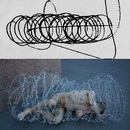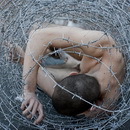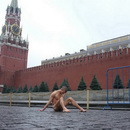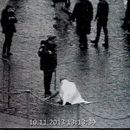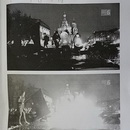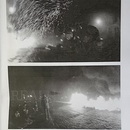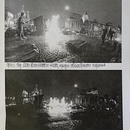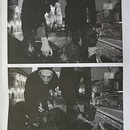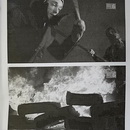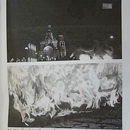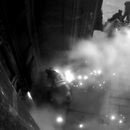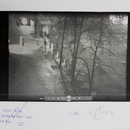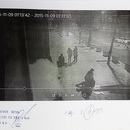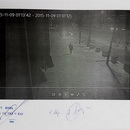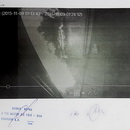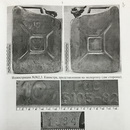Pyotr Pavlensky believes that he is engaged in political art. He defines his political messages with invariable accuracy, while simultaneously using his own body to create graphic images with the professional precision. One of his most well-known performance pieces was Threat, when on the night of 9 November 2015, he set alight the doors of the historic Lubyanka building, which houses the FSB (the successor of the Soviet KGB). His collaborators meanwhile distributed the artist’s statement that “Fear turns free people into a sticky mass of uncoordinated bodies.” The performance only lasted a few minutes, but the photographers who the artist invited managed to capture a vivid impression of the act, which they accurately named Gateway to Hell. The media then helped to keep the performance going, as it provoked an unusually active public discussion both in the Russian and international press, as well as via social media. The performance then continued during the court case, which the artist / activist also succeeding in turning into a spectacle.
Pavlensky uses police officers who try to detain him as indispensable participants in his performances. On 19 October 2014, protesting the return of Soviet-era forced psychiatry on dissidents (Segregation) Pavlensky cut off his right earlobe with a large kitchen knife while seated on a high wall surrounding a psychiatric clinic. Pavlensky’s action clearly hearkens back to Van Gogh’s own act of insanity; moreover, the performance turned the police officers who took the naked artist down from the wall into the proverbial Roman soldiers taking Christ down from the cross. In another instance, one of the artist’s interrogators, after many hours of questioning him, resigned and converted to become one of Pyotr’s followers. The interrogation, which has many hallmarks of a discourse on philosophy and art critique, made it into the public domain through online media – the medium by which most people can interact with Pavlensky’s performances. Deprived of political interaction in Russia, where public policy has for a long time lost any semblance of real debate, people are instead presented with Pavlensky’s art – and thus his “political art” has come to replace politics.

